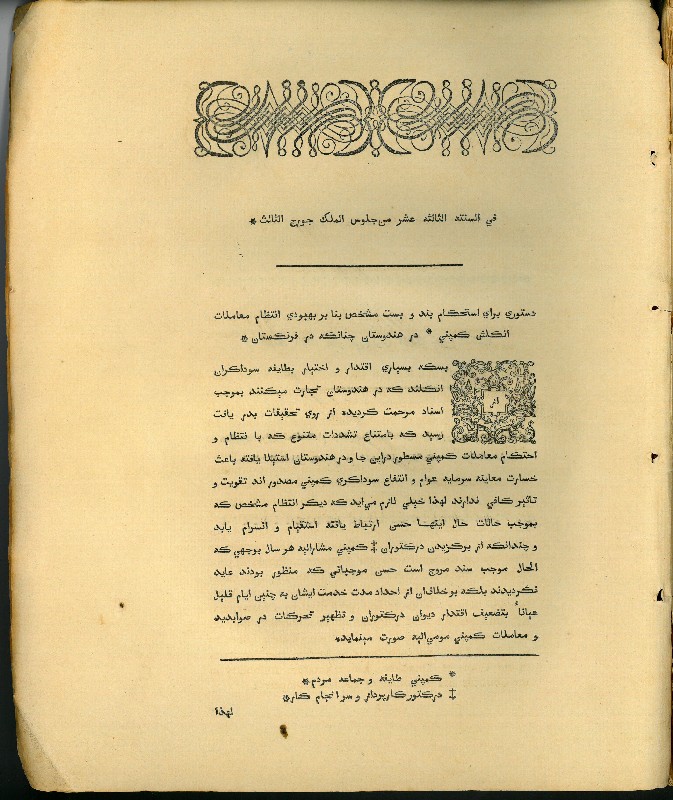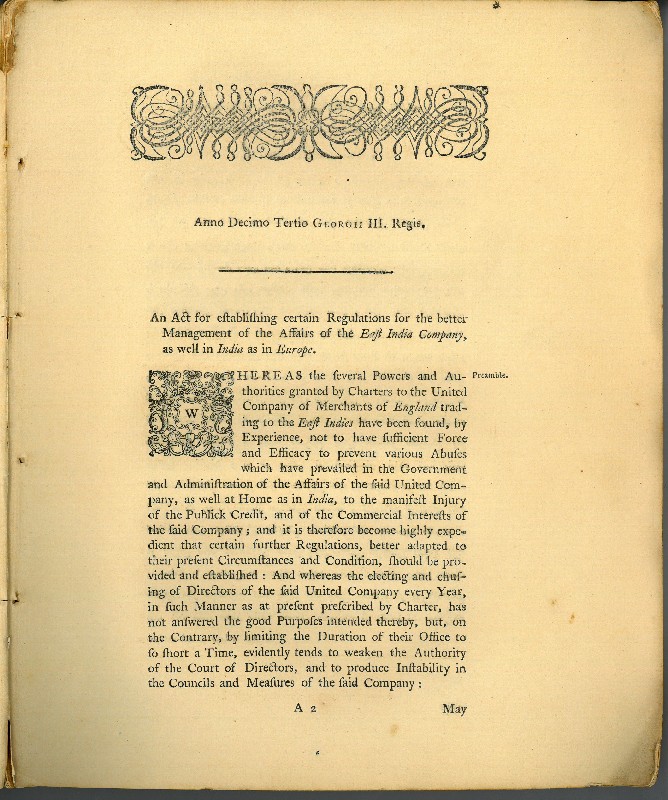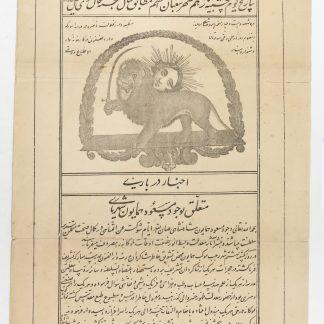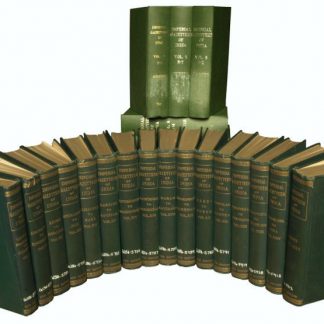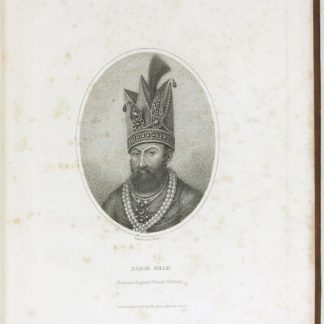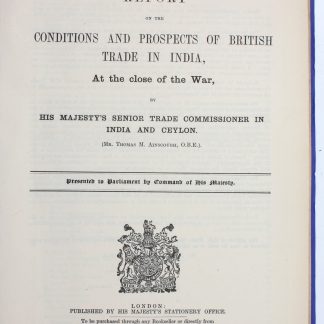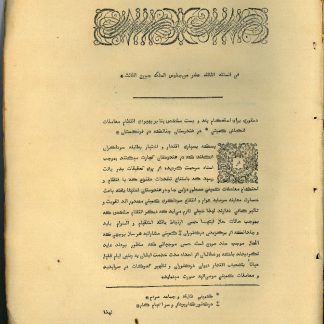The first step toward British government control of Gulf
Anno decimo tertio Georgii III. Regis. An Act for establishing certain Regulations for the better Management of the Affairs of the East India Company, as well in India as in Europe. [Fi al-sanath al-salisah `ashar min julus al-Malik Jurj al-Salis. Dasturi bara-yi istihkam-i bandubast-i mushakhkhas banabar bihbudi intizam-i mu` amalat-i Inglish Kampani dar Hindustan chunankih dar Firangistan].
Small folio (232 x 280 mm). 36 ff. Contemporary marbled wrappers. All edges gilt.
€ 18.000,00
The Regulating Act of 1773, published in Persian and English on opposite pages.
British interest in Persia and the Arabian Gulf originated in the 16th century and steadily increased as British India’s importance rose in the 18th century. In the beginning, the agenda was primarily of a commercial character: realizing the region's significance, the British fleet supported Shah Abbas in expelling the Portuguese from Hormuz in 1622. In return, the British East India Company was permitted to establish a trading post in the coastal city of Bandar 'Abbas, which became their principal port in the Gulf. The Company became responsible for conducting British foreign policy in the region, and concluded various treaties, agreements and engagements with Gulf states. In 1763 the EIC established a permanent residency at Bushehr, on the Persian side of the Gulf. By the early 1770s, the East India Company was in severe financial straights due both to corruption and nepotism as well as from steeply declining tea sales to America and heavy annual payments made to maintain the trading monopoly. When approached for assistance, the government enacted legislation to supervise ("regulate") the activities of the Company. This "Act for establishing certain Regulations for the better Management of the Affairs of the East India Company" constituted the first step toward eventual British government control of India, thus radically limiting the role of EIC in the administration of India. In 1784, little more than a decade later, Pitt's India Act would take reforms even further.
Another issue in the same year is known, with identical typesetting, but in which each page of text is enclosed within an engraved frame (these copies are printed in a taller folio format ). Slight edge repairs; spine restored. From the library of William Aldersey, president of the board of trade in Bengal, with his ownership (dated 1774) to recto of f. 1.
ESTC T145421. OCLC 560572771.

